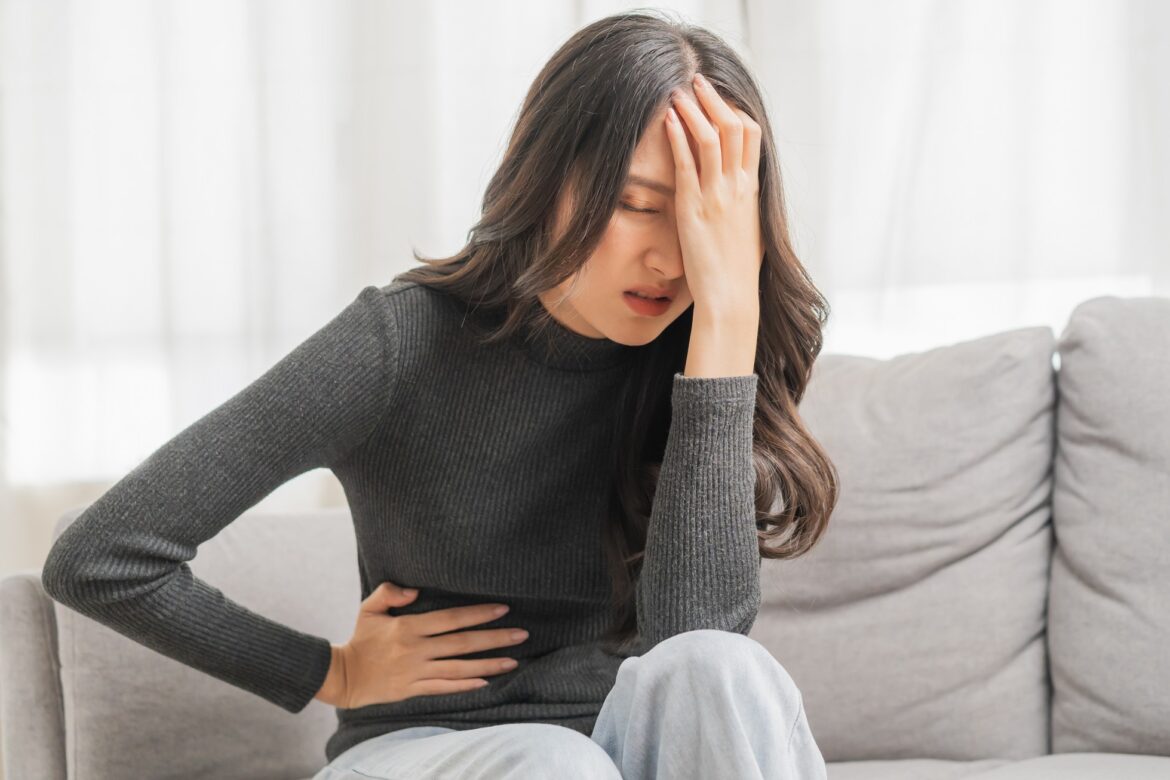Endometriosis is a condition where tissue similar to the lining of the uterine wall (endometrium) grows outside of the uterus, typically in the abdomen and pelvic area.[1] This tissue, similar to the uterine lining, thickens and breaks down with each menstrual cycle. However, because it grows outside of the uterus, it cannot exit the body through the usual pathways, leading to irritation, inflammation, and bleeding in the pelvic region. Over time, this can result in severe menstrual cramps, pelvic pain, and, in some cases, infertility.[2] Other common and life-impacting symptoms include abnormal or heavy bleeding, pain during intercourse, bowel movements, and urination, as well as abdominal bloating and fatigue.
Endometriosis affects up to 10% of reproductive women between the ages of 15 and 44.[3] Up till now, there is no known cure for endometriosis but the current treatments are usually targeted at symptom relief [3]. Conventional treatments of endometriosis are prescribed based on a few factors – the severity of the condition and symptoms experienced, the patient’s age and plans for future pregnancies. This includes medications for pain relief like over-the-counter painkillers and non-steroidal anti-inflammatory drugs (NSAIDs) or hormone therapies. In some severe cases, the doctor might recommend surgery [4]. These treatments might help relieve symptoms for a period of time, but often the effect is not long-lasting. Long-term usage of drugs might also cause harmful side effects like increased risk of peptic ulcer, acute renal failure, etc [5]. Additionally, hormone therapies which aim to relieve symptoms by stopping menstruation are not suitable for people who are actively planning to conceive during the treatment period.
Hence, many women who suffer from endometriosis or painful menstrual cramps are exploring alternative treatments like TCM for a more holistic approach. TCM views menstrual cramps, including endometriosis, primarily as a result of Blood stasis (血瘀). This stagnated blood obstructs the flow in and out of the womb and affects the growth and shedding of the endometrial lining due to poor circulation of essential nutrients that are transported by the blood.
Blood stasis often results from poor circulation of Qi and Blood, which can have several underlying causes. These include coldness in the womb (宮寒) due to over-consumption of cold drinks and cooling foods, deficiency of Yang in the Kidney (腎陽虛弱) often associated with family history or genetic predisposition, and stagnation of Liver Qi, frequently triggered by high stress or emotional factors. Therefore, TCM’s approach to endometriosis is centred on addressing the different root causes that contribute to Blood stasis, ultimately restoring the smooth circulation of Qi and Blood in the body.
Treating endometriosis with traditional TCM
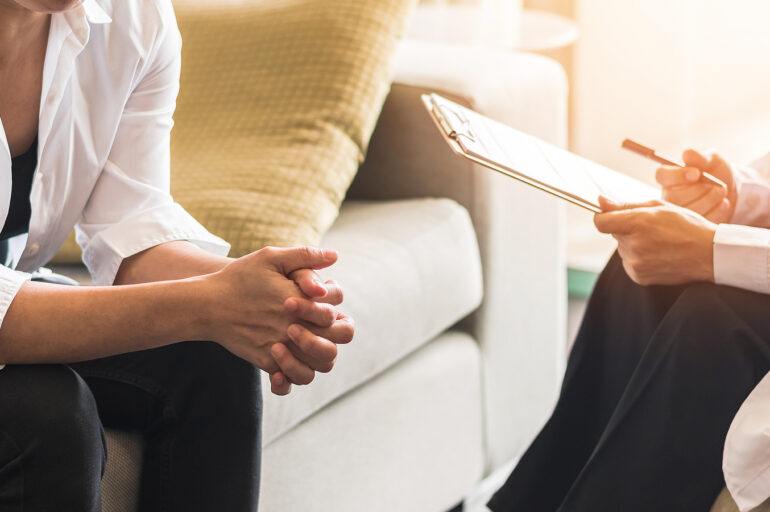
Several TCM treatment options are available to manage symptoms of endometriosis and potentially curb its progression. In our clinic, physicians prescribe traditional treatments like herbal medications, acupuncture, cupping, or moxibustion based on the patient’s body constitution and their comfort level with these approaches. At Oriental Remedies Clinic, our physicians are also well-versed in utilising tech-enhanced therapies available in the clinic, which can boost recovery, complementing traditional treatments. Therefore, depending on the patient’s suitability, our physicians may recommend Electro-Lymphatic Drainage Therapy (ELT), Cell Pro Therapy (CPT), or Far-Infrared Therapy (FIR) for those with endometriosis. Regardless of the chosen treatment method, the primary objective remains consistent: promoting blood circulation and alleviating Blood stasis. Given that endometriosis inherently leads to increased inflammation and pain, the treatment approach also targets the reduction of inflammation and the invigoration of Qi to reduce pain.
i. Herbal medications[6]
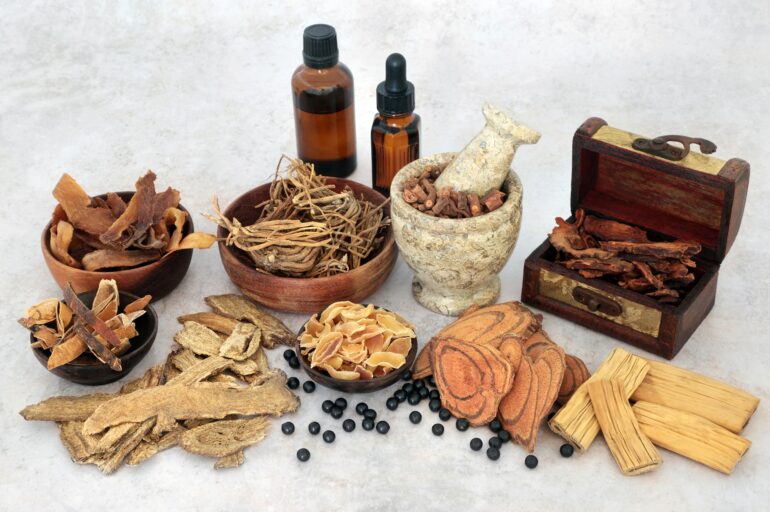
The unique approach of TCM herbal medications in managing endometriosis is evident in the tailored treatment at different stages of the menstrual cycle (分期治療). This approach primarily focuses on the pre- and post-menstrual stages. Pre-menstruation medication begins approximately 5-7 days before the onset of the period and can also continue during the period if menstrual cramps persist. This medication aims to regulate menstrual flow and relieve cramps by addressing specific imbalances in the body to help eliminate blood clots.
| Cold womb / Yang deficiency in Kidney (accompanied by coldness in extremities and lower belly, severe menstrual cramps and lower back pain) 陽虛寒凝 |
|
| 溫經湯 Wen Jing Tang concoction | Warms the womb, dissipates coldness and eliminates Blood stasis |
|
吳茱萸 Wu Zhu Yu (Evodia fruit) |
Relaxes uterine muscles and relieves pain[7] |
|
肉桂 Rou Gui (Cinnamon) |
Excellent warming properties for the Kidney and Liver, invigorates Qi and relieves pain |
|
小茴香 Xiao Hui Xiang (Dried fennel) |
|
|
烏藥 Wu Yao (Lindera root) |
|
| Liver Qi stagnation (accompanied by severe menstrual cramps with noticeable amount of period clots) 氣滯血瘀 |
|
| 少腹逐瘀汤 Shao Fu Zhu Yu Tang concoction | Invigorates Qi and promotes blood circulation, eliminates Blood stasis |
|
延胡索 Yan Hu Suo (Corydalis Rhizome) |
Relieve Qi stagnation in Liver, invigorates Blood and relieves pain |
|
川芎 Chuan Xiong (Szechuan Lovage Root) |
|
|
蒲黃 Pu Huang (Typha Pollen)[8] |
Reduce clotting and menstrual bleeding, alleviates cramps |
|
五靈脂 Wu Ling Zhi (Squirrel’s Droppings) |
|
In addition to tailored herbs and concoctions for different body constitutions, herbs like 红藤 Hong Teng (Sargentodoxa Stem) and 川牛膝 Chuan Niu Xi (Cyathula Root) are also commonly incorporated in herbal medication to direct medicinal action to lower part of the body and eliminating blood clots.
Post-menstruation concoctions are typically consumed over an extended period, from 1 week after the period to 1 week before the next one. Taking these herbs post-period ensures their strong action would not conflict with the heavy bleeding during menstruation and enables better clearance of abnormal endometrial growth. Examples of herbs used in post-menstruation herbal medication are 三棱 San Leng (Sparganium Rhizome) and 莪术 E Zhu (Curcuma Rhizome). 桂枝茯苓丸 Gui Zhi Fu Ling Wan concoction also also commonly used throughout the whole treatment of endometriosis due to its blood-promoting and stasis removal properties, as well as its ability to address dampness or inflammation commonly associated with abnormal uterine lining growth.
ii. Acupuncture
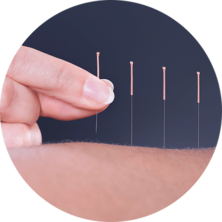
Acupuncture helps to improve blood circulation in the womb area and regulates the Qi that runs through different channels/meridians corresponding to different organs. The main channels are the Spleen, Liver, Kidney and Ren meridian which govern the reproductive and menstruation function. Certain acupuncture points also have blood-nourishing and cramps-relieving properties. Examples of these points are 中級 Zhong Ji (CV3), 關元 Guan Yuan (CV4), 合谷 He Gu (LI4) and 三陰交 San Yin Jiao (SP6). Western studies also show that acupuncture can help to reduce pain through elevating endorphins (pain-relieving hormones), as well as dopamine and serotonin (mood-relieving hormones).[9] Acupuncture also helps to improve immune function, as such facilitating the attacking of abnormal growth and decreasing inflammatory markers[9].
iii. Moxibustion
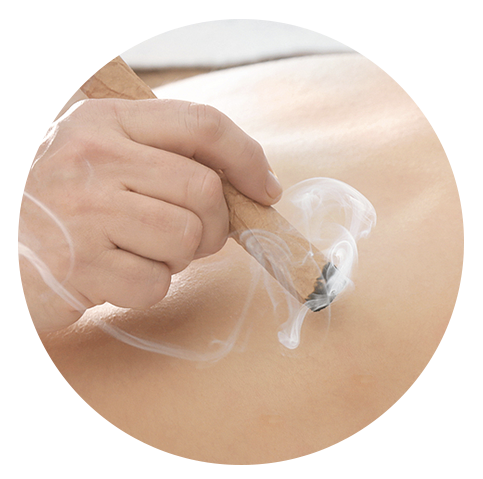
Moxibustion is a traditional therapy which consists of burning dried mugwort on particular points on the body, usually on the acupuncture point. Mugwort increases blood circulation to warm up the uterus and pelvic region. The artemisinin component found in mugwort is said to cause gentle contractions of the uterus, which promote regular periods and remove stagnant blood (the source of cramps, stiffness and pain). Other compounds from mugworts are found to have potent antioxidant effects which could help in uterus and ovary health for fertility[10].
iv. Cupping
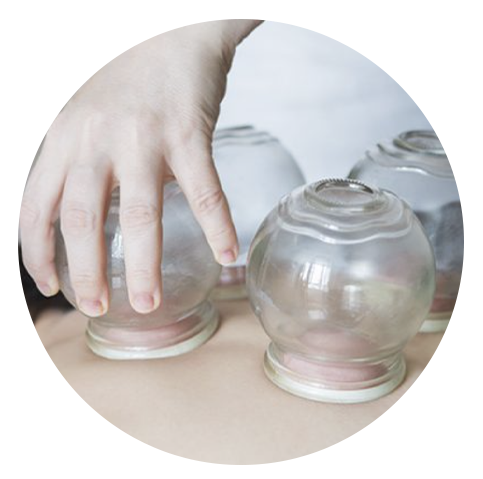
Cupping is also a traditional TCM therapy that involves suction created by fire in glass cups to pull on the skin and increase blood flow to the treatment area. The use of fire can also warm the body, opening pores to aid the removal of dampness or toxins in the body and can improve lymphatic flow to relieve inflammation[11].
Treating endometriosis with Tech-enhanced therapies
i. Electro-Lymphatic Therapy (ELT)
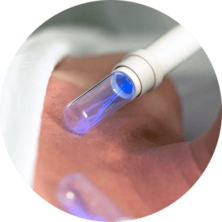
Endometriosis often leads to inflammation in surrounding areas due to the abnormal growth of the endometrial lining outside the uterus. This inflammation can cause adhesion and scar tissue formation in the pelvic region, resulting in tension and pain. At ORG, Electro-Lymphatic Therapy (ELT) is widely used in conditions with chronic inflammation. ELT enhances lymphatic flow, facilitating the removal of excess inflammatory mediators and supporting a healthy immune system[12]. This is crucial, as immune and inflammatory dysfunctions are key targets in endometriosis treatment[13].
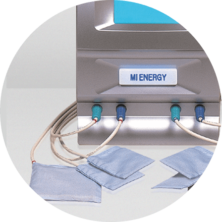
Cell Pro Therapy (CPT) helps to neutralise oxidative stress caused by free radicals or reactive oxygen species (ROS) in endometriosis[14]. Its potent antioxidant effects improve cellular function, leading to better blood circulation and enhanced immunity. Negative ions also help balance the autonomic nervous system, assisting with pain management[15] and hormone regulation[16].
iii. Far-Infrared Therapy (FIR)
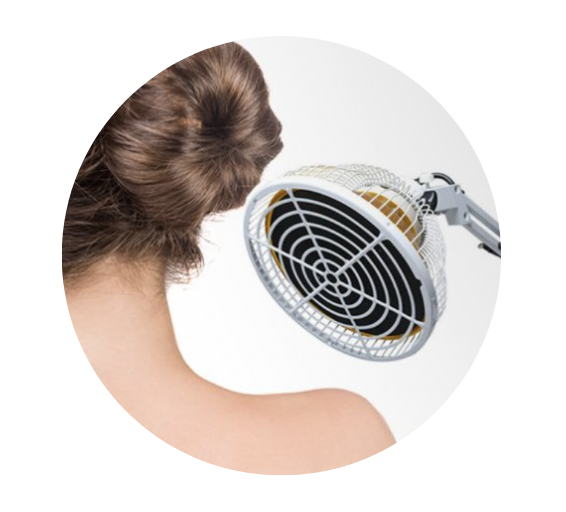
Far-Infrared Therapy (FIR) is employed to elevate skin temperature and penetrate deeper layers, promoting blood circulation and muscle relaxation. This therapy can alleviate menstrual cramps by inducing a soothing and calming effect on the mind and body[17].
Self-care tips at home for managing endometriosis
i) Acupressure massage
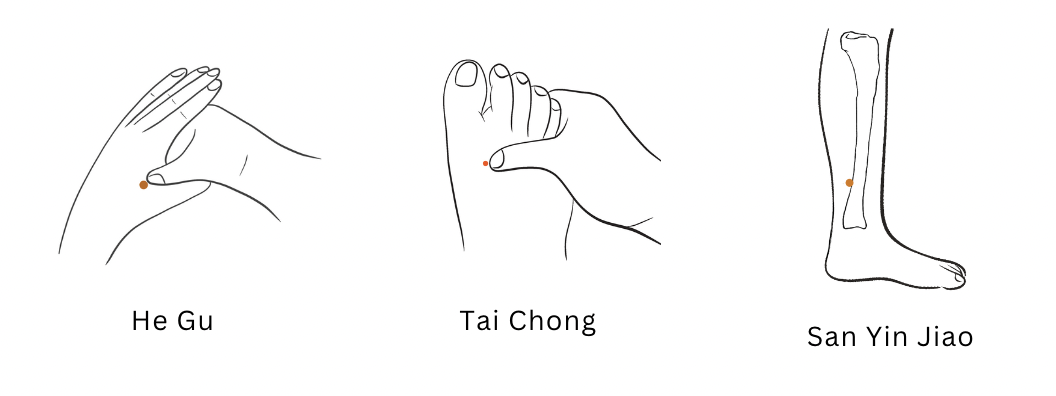
Massage 合谷 He Gu (LI4), 太沖 Tai Chong (LV3) and 三陰交 San Yin Jiao (SP6) points two times daily in a circular motion with gentle force. Do this for 1-2 minutes at each point. The first two points can help to improve blood circulation, eliminate blood stasis, invigorate Qi and relieve pain. The last point is a common acupressure point commonly used to offer relief from gynecologic disorders, including menstrual cramps[18].
How to locate:
合谷 He Gu (LI4): Found on the back of the hand, at the midpoint of second metacarpal bone on the radial(thumb) side.
太沖 Tai Chong (LV3): Found on the top of the foot, at the junction of the first and second metatarsal bone.
三陰交 San Yin Jiao (SP6): Four fingers wide above the tip of inner ankle, behind the tibia bone.
ii) Dietary and lifestyle recommendations

Although TCM treatments are essential in helping to alleviate and reduce symptoms associated with endometriosis, dietary and lifestyle practices do play an important role in determining the success and progression of endometriosis treatment. Examples of dietary advice would be abstaining from cold drinks and cooling foods. Cooling foods include those that are taken in their raw form like salads and sashimi. Avoiding these foods would prevent coldness from further worsening the body’s blood circulation and the Yang element, which gives the body warmth and energy. Next, one should avoid foods that are high in sugar content and processed foods because of their pro-inflammatory property. Lastly, it is important to eat wholesome meals consisting of fruits and vegetables, as well as sources rich in omega-3 fatty acids like salmon, tuna and walnuts[19].
Adopting a healthy lifestyle usually comes with consistency and determination, however, if we manage to do so, the beneficial effects from it could be life-changing and everlasting. Similarly to avoiding cold drinks, one should avoid showering too late at night and make sure to take warm showers all the time to dispel coldness. Extra measures could be done like wearing home slippers instead of barefoot to prevent coldness from entering through the sole, as well as wearing socks to sleep to maintain better blood circulation and keeping the feet warm. Secondly, sufficient rest with good sleep quality is necessary to enable the body to repair and relax. Stress management should be prioritised as well to ensure better circulation of Qi and blood. Besides that, try to do low-impact exercises regularly like yoga, pilates and stretching exercises for a better flow of Qi and blood and to help your body produce more endorphins (making the body less sensitive to pain).
Your healing is the most important!
While conventional medicine focuses on symptomatic relief for endometriosis treatment, TCM aims to restore the natural balance of Yin-Yang, as well as Qi and blood in the body to address different health conditions through different TCM treatments. Using herbal medications, acupuncture, moxibustion or cupping to improve circulation and eliminate stagnation, the root cause of endometriosis could be addressed.
Additionally, in order to accelerate the recovery progress and to complement the TCM treatments through a modern approach, physicians at ORG would also prescribe tech-enhanced therapies like ELT and Cell Pro Therapy (CPT) based on their understanding of the western pathogenesis of endometriosis. The combination of TCM and tech-enhanced treatments, together with recommendations on dietary and lifestyle practices could target different aspects of endometriosis as a whole through a holistic approach.
This article is written by Physician Jesslyn Poh.
Physician Jesslyn Poh (Oriental Remedies Group, Singapore), a registered TCM physician certified by the Traditional Chinese Medicine Practitioners Board (TCMPB).
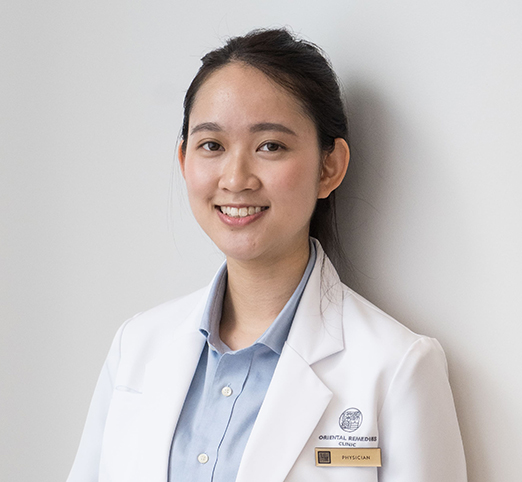
Note: all words in Italics mentioned henceforth refer to the TCM organ system and not the anatomical organs/terms referenced in western medicine.
Disclaimer:
The content on this page is for information and educational purposes only. Such medical information may relate to disease, injury, drugs and other treatments, medical devices and/or health products. Medical information does not amount to advice, and if advice is needed an appropriate professional help should be sought. The disclaimer asserts that no warranties or representations are given in respect of the medical information, and that the website operator should not be held liable if a user suffers any injury or loss after relying upon the medical information.
Any devices used for technology-enhanced therapies are intended for use only for general well-being purposes or to encourage or maintain a healthy lifestyle, and is not intended to be used for any medical purpose (such as the detection. diagnosis, monitoring, management or treatment of any medical condition or disease). Any health-related information provided by this device or software should not be treated as medical advice.
References:
[1] https://www.mayoclinic.org/diseases-conditions/endometriosis/symptoms-causes/syc-20354656
[2] https://www.gleneagles.com.sg/conditions-diseases/endometriosis/symptoms-causes
[3] https://www.who.int/news-room/fact-sheets/detail/endometriosis
[4] https://my.clevelandclinic.org/health/diseases/10857-endometriosis
[5] https://www.ncbi.nlm.nih.gov/pmc/articles/PMC3158445/
[6] https://journals.sagepub.com/doi/10.2217/17455057.1.3.447
[7] https://pubmed.ncbi.nlm.nih.gov/16824714/
[8] Chen J, Chen T: Chinese Medical Herbology and Pharmacology Crampton L (Ed) Art of Medicine Press, City of Industry, CA, USA, 1–3, (2004).
[9] https://www.endofound.org/can-acupuncture-reduce-endometriosis-pain
[10] https://www.verywellhealth.com/mugwort-benefits-side-effects-dosage-and-interactions-
[11] https://www.healthline.com/health/cupping-therapy#does-it-remove-toxins
[13] https://www.mdpi.com/1422-0067/22/16/9033
[14] https://www.mdpi.com/1422-0067/22/13/7138
[15] https://www.orientalremediesgroup.com/services/negative-ion-therapy/
[17] https://www.orientalremediesgroup.com/services/far-infrared-therapy/
[18] https://www.tandfonline.com/doi/full/10.2147/PPA.S27127

